A Complete Guide for Annapurna Circuit Trek
Annapurna is Nepal's most diverse and well-known trekking destination. With a total area of 7,629 square kilometres, Annapurna is Nepal's most recognized conservation area.
Annapurna is Nepal's most diverse and well-known trekking destination. With a total area of 7,629 square kilometres, Annapurna is Nepal's most recognized conservation area.
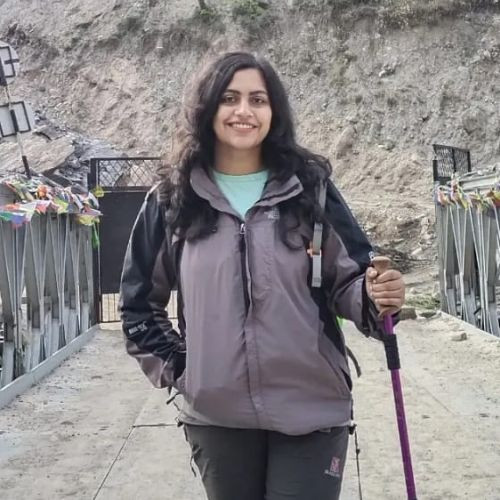
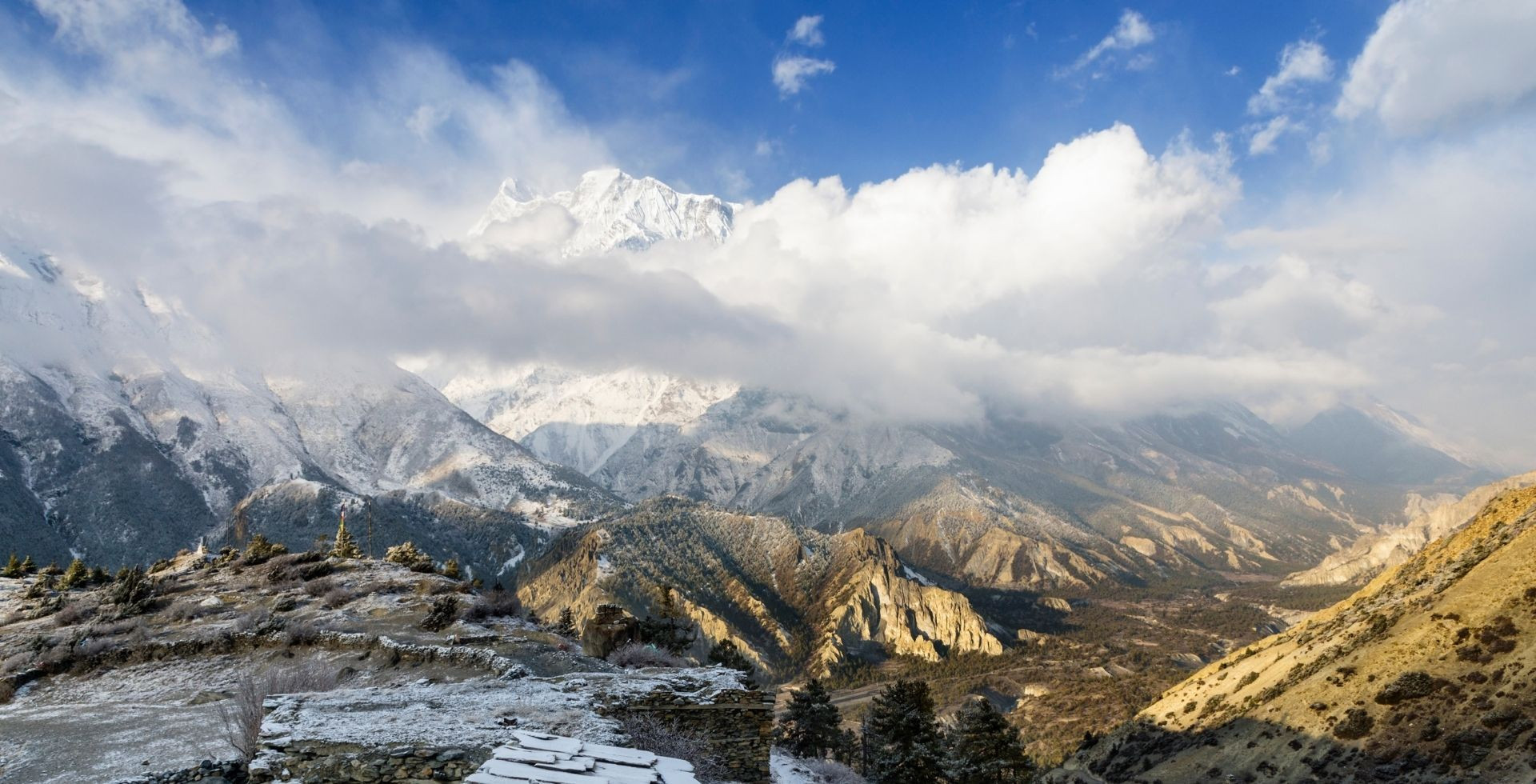
Every year, hundreds of trekkers embark on the Annapurna Circuit trek. The snow-capped peaks appear to be majestic and dominating. Annapurna is Nepal's most diverse and well-known trekking destination. With a total area of 7,629 square kilometres, Annapurna is Nepal's most recognized conservation area. Annapurna is not only Nepal's largest conservation area; it's also one of the most popular tourist destinations in the country, second only to the Everest region, and one of the best trekking routes in the country.
There are treks for everyone, from three-week Annapurna Circuit treks into the historic Mustang district to short three-day trips, depending on the inclinations of the people who come here. Every day on the journey, as new locations are discovered and one is immersed in the hidden valleys of the gorgeous Annapurna region, one's sense of fulfilment will grow.
Annapurna refers to the mountain range that includes Annapurna I, the first of the eight peaks exceeding 8,000 meters in height. This region also includes Dhaulagiri, the 8,000-meter-high western neighbour of Annapurna I. Thorong La pass, located in Nepal's Kaski district, which is the highest point of the Annapurna circuit trek.
The Annapurna range of mountains sits to the interior, allowing a large region including Manang and Mustang to remain in the rain shadow when hiking is optimal due to the lack of rain and temperate temperatures. The island's eastern side is generally drier and arid than the south slopes of the mountains ((of land or a climate) receiving little or no rain; too dry or barren to support vegetation). This creates a bleak landscape that resembles a desert, instead of the green pastures and fruitful farms found further down.
The Annapurna Circuit Trek starts in Besisahar and travels upstream along the Marsyangdi River to its source in Manang. The excursion includes views of the Annapurna range, Mt. Gangapurna, and Dhaulagiri, Manaslu, and Nilgiri, as well as a journey through the world's deepest valley, which runs between two 8,000-meter peaks, and Mt. Annapurna I and Mt. Dhaulagiri. Manang lies close to the frozen Gangapurna Lake and the stunning natural beauty that surrounds the Gangapurna Glacier. Poon Hill, on the other side, has breathtaking views of Mount Dhaulagiri, Annapurna South, and Machhapuchhre "Fishtail Mountain."
|
Trail |
Annapurna Circuit Trek |
|
Region |
Annapurna Region (Annapurna Conservation Area) |
|
Established Year |
1992 |
|
Area |
7,629 Sq. kilometres |
|
Country |
Nepal |
|
Province |
Gandaki |
|
Districts |
Manang, Mustang, Kaski, Lamjung, Myagdi |
|
Best Time to visit |
Mar-May, Sept-Nov |
|
Mountains |
Annapurna I-IV, Annapurna South, Gangapurna, Machhapuchhre, Nimjung, Tilicho Peak |
|
High Passes |
Thorong La Pass (5416 m.) |
|
Borders |
Marsyangdi Valley in the East |
|
Required Permits |
Annapurna Conservation Area Permit (ACAP) |
The Annapurna Circuit walk is ideal for those who want to see a variety of beautiful natural landscapes, meet interesting and kind people from all around Nepal, and immerse themselves in a culture that is very different from their own.

The views of rich, productive agriculture, pristine natural woods, and snow-capped mountains will astound visitors in every way. Between these two mountains is the Kali-Gandaki River's deep valley. Trekkers may come across the intriguing Thakali people in this area. They are well-known for their strong commercial activities, and both visitors and Nepalese locals admire their cuisine.
The Annapurna Circuit Trek, according to the theme, is located within the Annapurna Circuit. The Annapurna Circuit, as the name suggests, is a trip through Nepal's core mountain ranges. The overall length of the route varies between 160 and 230 kilometres, depending on the kind of transportation employed and where the walk ends.
The Annapurna Circuit trip passes through two separate river valleys and encircles the Annapurna Massif, which is a compact group of mountains in the Annapurna region. The path ascends to its highest point, the Thorung La Pass, which is located at an elevation of 5416 meters, on the highlands, trans-Himalayan zones. Most trekkers appear to travel the route counterclockwise, as this slows daily altitude gain and makes crossing the high Thorong La Pass simpler and safer.
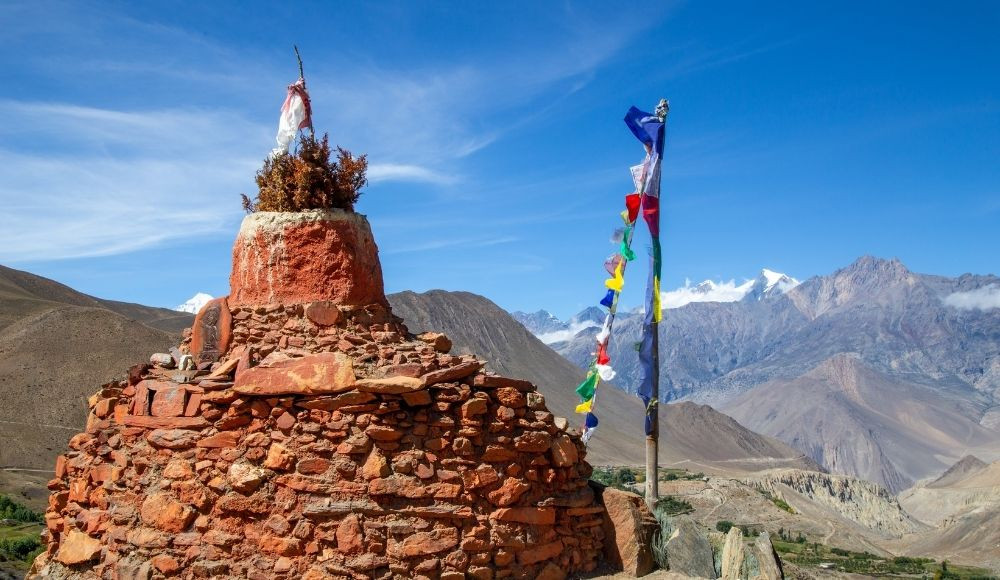
During the Annapurna Circuit Trek, the trekkers can encounter some of the majestic Himalayas such as Annapurna (I-IV), Dhaulagiri, Macchapucchre, Manaslu, Gangapurna, Tilicho Peak, Pisang Peak, Paungda Danda and many other neighbouring peaks. There are numerous other peaks of 6000-8000 m in elevation rising from the Annapurna Range.
Adventure brings with it a plethora of pleasant surprises and a variety of thrilling variables. While experiencing the many parts of the Annapurna Circuit path, the Annapurna Circuit Trek presents you with several thrilling and once-in-a-lifetime moments. Annapurna Circuit Walk is one of the most exciting and beautiful treks because of the warm hospitality of the local people, the mind-calming beauty of nature, and the variety of diverse destinations that will be experienced during this trek. The many locals that are contained inside this circuit, as well as many other things associated with it, have made this circuit incredibly popular and adored.
Some of the major highlights of the Annapurna Circuit Trek are Besisahar, Manang, Muktinath Temple, Thorong La Pass, Tilicho Lake, Jomsom and Tatopani.
Besisahar is the starting point for the famous Annapurna Range Trek, with its subtropical temperate and deciduous forest. Lamjung is both a municipality and the district headquarters of Lamjung, which is located in Nepal's mid-hills. Lamjung has a spectacular view of mountain ranges, verdant hills, rivers and streams, waterfalls, old villages, and the beauty of culture, tradition, religion, and multi-ethnic people. The majority of the population is made up of Brahmin, Magar, Chhetri, Tamang, Newar, and other ethnic groups. It has the country's largest density of Gurung ethnic population. One of the major attractions of Besisahar is Bhujung Gaun which is Nepal’s cleanest village and one can experience a unique typical taste of Nepalese Gurung culture.
For many trekkers, Manang, at 3519 meters above sea level, is an important stop on the Annapurna Circuit. This village and the surrounding area are home to about 7000 people, and it provides a variation for travelers who are used to living in distant and basic villages when trekking through the Himalayas. Manang is an excellent place to rest, refuel, and prepare your body before heading to higher elevations. The need for acclimatization should not be overlooked as Manang is considered the main acclimatization point in the Annapurna Circuit Trek.
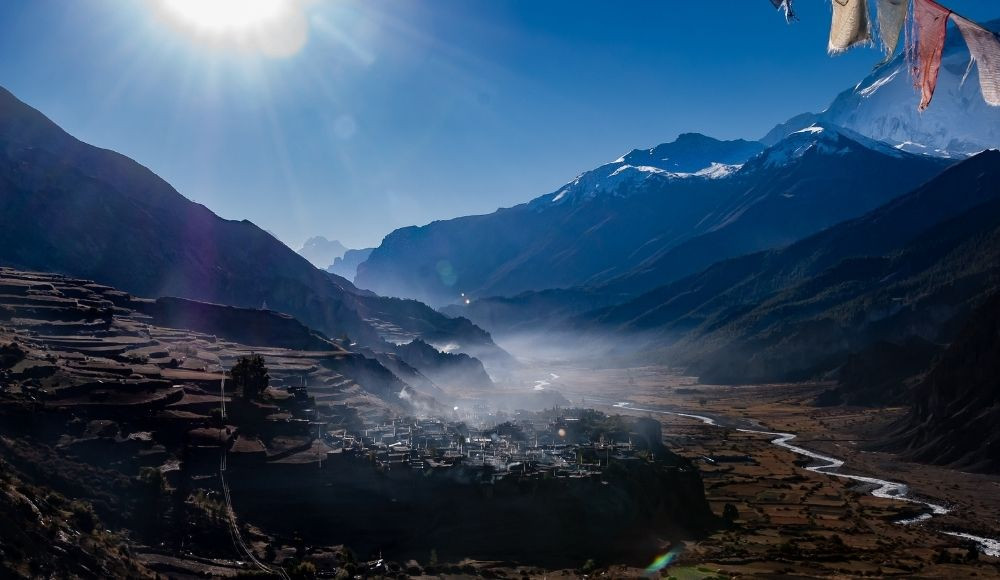
Manang, commonly known as the Nepalese Desert, is one of Nepal’s mesmerizing destinations. In addition to the gorgeous scenery and the local people's way of life, the natural beauty of Manang feels like heaven when explored. Manang is wealthier than other adjacent regions because of its abundant natural resources, artifacts, herbs and gems, culture, and traditions. In Manang, there are numerous monasteries. This location bears the imprint of old Tibetan Buddhist devotional activities. Manang is a true Nepali paradise. The surrounding area, including the local settlement, mountains, and glaciers, creates a memorable experience in this beauty.
Muktinath Temple is one of Nepal's most visited religious destinations. Similarly, this sacred temple, which is located at an elevation of 3,800 meters above sea level, attracts both Hindu and Buddhist followers. Aside from that, the Kali Gandaki river, which is considered one of Nepal's major rivers, begins at the Muktinath temple. All of your requests are believed to be granted if you bathe at the 108 stone taps before worshipping at the holy Muktinath temple.
Thorong La Pass is the highest point on the Annapurna circuit trek, standing at 5,416 meters above sea level. It takes at least two days to hike from Manang village to Muktinath temple through Thorong La Pass. The Thorong La Pass is formed by the mountain ranges Khatung Kang and Yaskawa Kang. Fantastic views of the mountain ranges may be seen from the top.
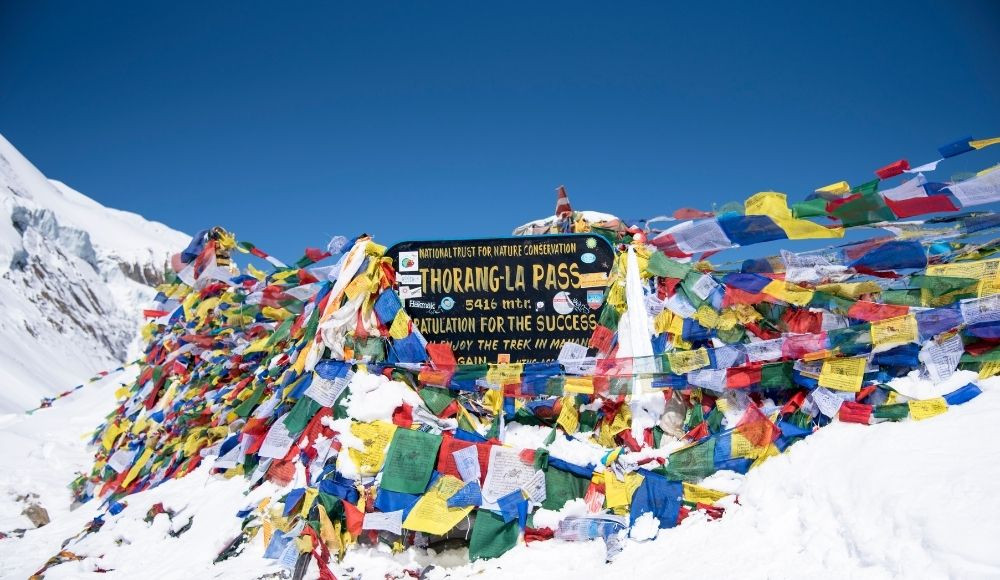
Tilicho Lake Trek is a journey to Tilicho, the world's highest glacier lake at 4919 meters. Tlicho Lake is one of the best sight hikes on the Annapurna Circuit. Hikers frequently do it as part of the Annapurna circuit trip, and most trekkers cross Thorong la pass after completing the Tilicho lake trek. One of the main attractions in the Annapurna region is this gorgeous lake. The High Himalayas encircle Lake Tilicho, with the Tilicho mountain (7,134 meters) being the highest. The Tilicho lake trek is the ideal activity because of the stunning landscapes and towering mountains.
Jomsom, in Nepal's Mustang province, is a breathtakingly lovely town. The beauty of this spot is truly unsurpassed, as it is situated near the foothills of the Dhaulagiri and Nilgiri mountains. Jomsom is the hub of the Mustang district with an airport, schools, hotels, banks, shops, and museums.
The Tatopani Hot Spring Trek is an exciting hiking excursion that culminates in a natural hot spring in Nepal's Annapurna area. The Tatopani Hot Spring Trek is a dive into the wild and an excellent natural wonder, followed by a visit to Poon Hill's world-famous Himalaya panorama. This Tatopani Hot Spring is designed for travellers who wish to enjoy their trip rather than being fatigued every day from arduous walking.
Annapurna Circuit Trek provides you with numerous choices of places to choose from due to its various diverse and beautiful places which will awe you in every step of your journey. Moreover, you can choose the desired itinerary according to your preference according to the places you desire to cover and explore during your Annapurna Circuit Trek. Following are the three types of itineraries which vary according to the number of days and also some places.
The rich and diverse Annapurna Circuit trek is one of the most visited, famous, and praised treks in the region. It's one of the area's stunning trekking spots, with breathtaking trekking paths that will provide each visitor with an exciting, beautiful, and magnificent experience. The Annapurna Circuit trek, which has been dubbed the ‘Grand Canyon of Nepal’, takes in diverse topographical conditions, distinct culture, gorgeous traditional settlements, and picture-perfect luxury. The Annapurna Circuit trek, which is made up of five sections totaling 248 kilometers and 154 miles in all, is named after the classical region of Annapurna. It begins in Lamjung and passes through Manang, Mustang, Myagdi, and Kaski before returning to Lamjung.
When you reach Thorong La Pass, the world's highest accessible pass, one of the most self-accomplishing feelings you experience is when you cross it. The next stop is Muktinath, which is a sacred site for Hindu devotees all around the world and one of the holiest places in Nepal.
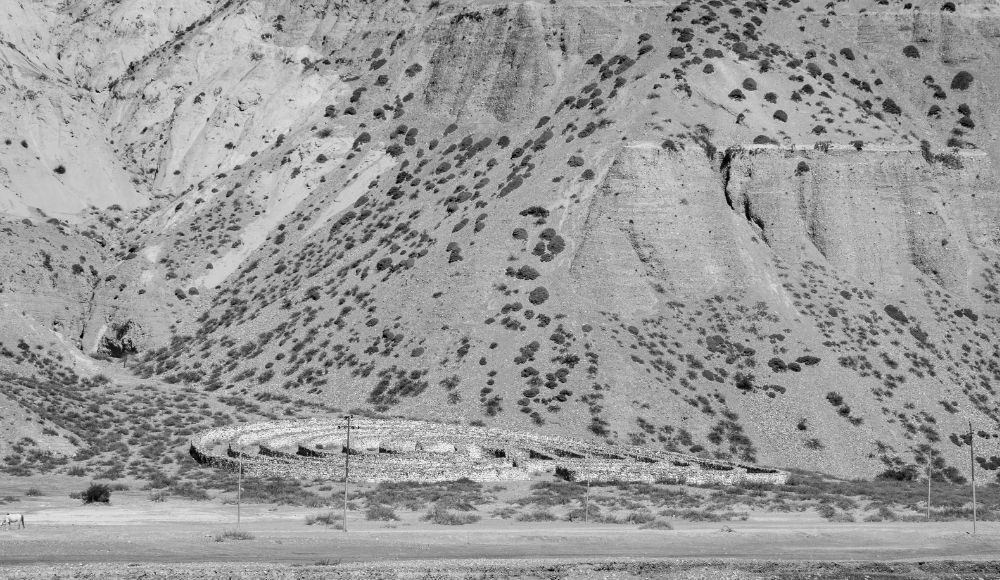
We go to the Mustang Valley in Nepal, where Jomsom will undoubtedly soothe you and allow you to see the Apple Valley of Marpha. We trek into the world's deepest canyon and visit Tatopani, which has a natural hot spring to give pain relief to tired muscles. The lush woodland of oak and rhododendron is also said to be a stunning sight. The Poon Hill sunrise is something not to be missed. We may sense the sunrise as a perfect blend of Beauty, Magic, Inspiration, and Hope.
|
Day |
Places to be covered |
Distance |
|
Day 1 |
Arrival In Kathmandu ( 1350m) |
|
|
Day 2 |
Half-day sightseeing in Kathmandu. |
|
|
DAY 3 |
Drive to Besisahar |
175.5 km 24.9 km |
|
DAY 4 |
Trek to Jagat. (1300 m) |
9 km |
|
DAY 5 |
Trek to Dharapani. (1900 m) |
15 km |
|
Day 6 |
Trek to Chame. (2710 m) |
15.7 km |
|
Day 7 |
Trek to Upper Pisang. (3310 m) |
14 km |
|
Day 8 |
Trek to Manang (3540 m) |
15 km |
|
Day 9 |
Manang: Acclimatization Day (3540 m) |
|
|
Day 10 |
Trek to Yak Kharka (4050 m) |
9.5 km |
|
Day 11 |
Trek to Thorang Phedi (4450 m) |
7 km |
|
Day 12 |
Trek to Muktinath (3800 m) via Thorong La Pass (5416 m) |
14 km |
|
Day 13 |
Trek to Marpha (2670 m) |
24 km |
|
Day 14 |
Trek to Kalopani (2535 m) |
19.7 km |
|
Day 15 |
Trek to Tatopani (1200 m) |
22.7 km |
|
Day 16 |
Trek to Shikha (1935 m) |
8.7 km |
|
Day 17 |
Trek to Ghorepani (2870 m) |
7 km |
|
Day 18 |
Morning hike to Poonhill (3200 m) and Trek to Ulleri (2010 m) |
1.5 km 9.2 km |
|
Day 19 |
Trek to Nayapul (1070 m) |
12 km 40 km |
|
Day 20 |
Fly back to Kathmandu. (1400 m) |
|
|
Day 21 |
Transfer to Airport. |
The Modern Annapurna Circuit trek is a 14-day journey in the beautiful Annapurna area, which is anticlockwise and sits in Nepal's northwestern corner. Compared to any other comparable length trek, the contemporary 14-day Annapurna Circuit Trek offers a variety of experiences and stunning sights. You'll see the stunning villages of Mustang and Manang, which are also known as the tourism center, as thousands of tourists visit these locations every year.
The trek offers incredible views of Annapurna, Dhaulagiri, and other mountains. You'll go from a sub-tropical environment to an alpine peak to a semi-arid desert area in Manang.
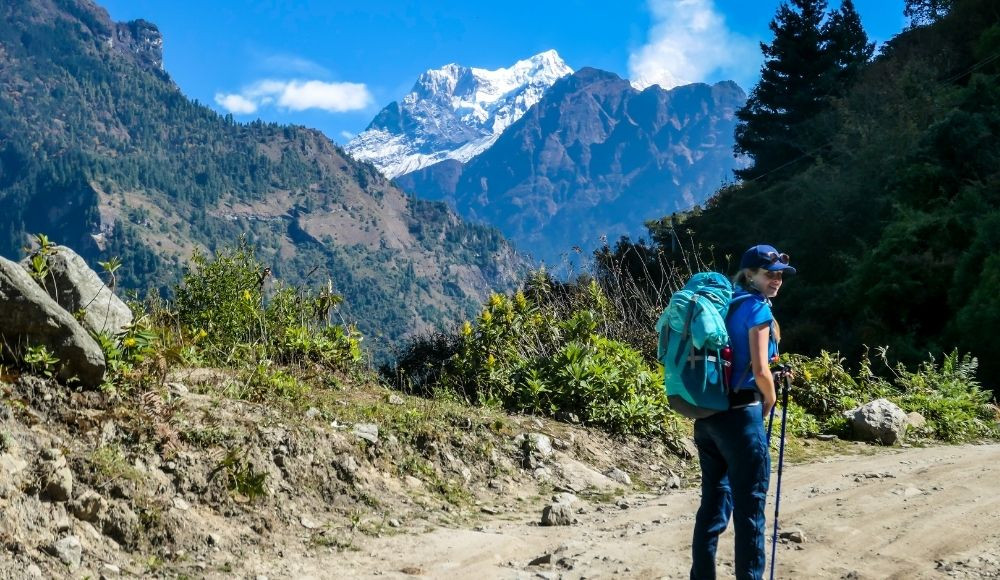
Many of Nepal's many peoples, cultures, beliefs, and ways of life are represented in villages where visitors can enjoy time with the region's diverse people. The Thorong La Pass is the highest point that you will reach on this journey, which is located at an elevation of 5416 meters and may be considered one of the most spectacular moments in your life.
|
Day |
Places to be covered |
Distance |
|
Day 1 |
Arrival at Kathmandu |
|
|
Day 2 |
Drive from Kathmandu to Besisahar |
176 km |
|
Day 3 |
Drive from Besisahar (820 m) to Dharapani. (1900 m) |
45 km |
|
Day 4 |
Trek from Dharapani to Chame. (2710 m) |
15 km |
|
Day 5 |
Trek from Chame to Upper Pisang (3310 m) |
14 km |
|
Day 6 |
Trek from Upper Pisang to Manang (3540 m) |
15 km |
|
Day 7 |
Acclimatization in Manang |
|
|
Day 8 |
Trek from Manang to Yak Kharka (4050 m) |
9.5 km |
|
Day 9 |
Trek from Yak Kharka to Thorong Phedi (4450 m) |
7 km |
|
Day 10 |
Trek from Thorung Phedi to Muktinath (3800 m) via Thorong La Pass (5416 m) |
14 km |
|
Day 11 |
Trek from Muktinath to Jomsom (2720 m) |
18 km |
|
Day 12 |
Drive from Jomsom to Pokhara (822 m) (Optional Flight) |
160 km |
|
Day 13 |
Drive from Pokhara to Kathmandu (1400 m) (Optional flight) |
210 km |
|
Day 14 |
Transfer to Airport |
The shorter variant of the main Annapurna circuit trek in Nepal is the Short Annapurna Circuit Trek. It's a wonderful alternative for travellers on a tight schedule looking to see some of the most popular walking routes in the Annapurna region. Thorong La Pass, which is located in the Kaski region of Nepal, is the highest point of the Annapurna Circuit Trek. After passing Thorong La Pass, you may visit the Muktinath temple in Mustang.
Furthermore, you may go to some of the ancient monasteries and visit rural villages along the trekking routes.
This trekking route to the top of the Larkya La pass, also known as the mini Annapurna circuit trek, is gaining a lot of attention in recent times due to its short duration. The spectacular icefalls, glacier lakes, and warm welcome of the locals are among the primary attractions of a quick Annapurna circuit excursion.
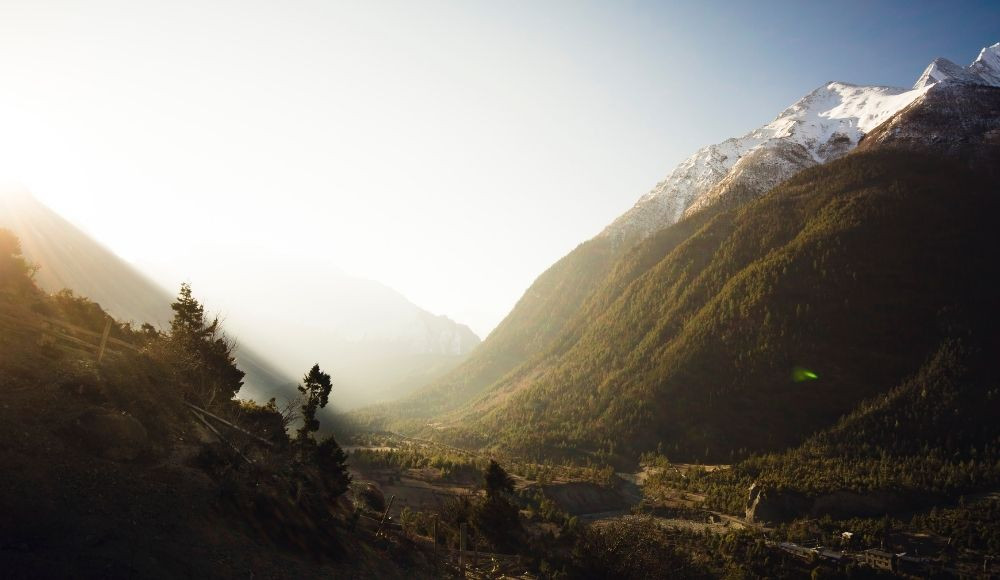
The Chame village is the starting point for trekkers heading to Jomsom, whereas the endpoint is Mustang's Jomsom. Meanwhile, the total trekking days are 10 days including an acclimatization and rest day. You may also enjoy stunning views of the mountain ranges from various points on the trek.
|
Days |
Places to be covered |
Distance |
|
Day 1 |
Drive to Dharapani (1900 m) from Kathmandu (1400 m) |
118km |
|
Day 2 |
Trek from Dharapani to Chame. (2710 m) |
15.7 km |
|
Day 3 |
Trek to Upper Pisang (3310 m) |
14.6 km |
|
Day 4 |
Trek to Manang (3540 m) |
15 km |
|
Day 5 |
Acclimatization: Rest day in Manang (3540 m) |
|
|
Day 6 |
Trek to Yak Kharka (4050 m) |
9.5 km |
|
Day 7 |
Trek to Thorong high camp (4850 m) |
6.7 km |
|
Day 8 |
Trek to Muktinath (3800 m) via Thorong la pass (5416 m) |
16 km |
|
Day 9 |
Drive or trek from Muktinath to Jomsom (2720 m) |
22.1 km |
|
Day 10 |
Fly back to Pokhara (822m) |
The cost of the Annapurna Circuit trek does not always stay constant or adhere to a set amount. The price varies depending on various determinants or factors. The cost of a trek varies based on the type of itinerary that visitors wish to take. There are several different sorts of itineraries, each with its own price factor. Following that, the costs may differ depending on the transportation modes they wish to use; whether by road or flight, they would want to get to their intended destinations. Teahouses, lodges, resorts, and other accommodation options can be found in the Annapurna Circuit Trek at various price ranges. The costs vary depending on the customers' budget.
They may pay more if they are on vacation during the peak season than when tourists are not visiting.
There are many other factors that influence the price, but they are the most significant.
Get in touch with our experts right away and finalize an experience!
About UsSo, when is the best time to go on the Annapurna Circuit trek and see all Nepal has to offer? When is the optimum season to visit the beautiful Annapurna Circuit trek? The answer is Autumn and Spring, which are the two seasons of the year.
March, April, and May fall under the spring season. It is the period when 25-30% of the tourists make their way through the circuit. This season has the most active birds and flora-fauna in the region, with one of the most spectacular springs imaginable. The weather is also pleasant, and it promises to be one of your finest springs ever. During these months, you may see the wonderful views of the mountain ranges and the blooming rhododendron flowers in the lower sections of the trekking routes. Furthermore, you may visit ancient monasteries dating from very old times. The Annapurna Circuit is well-known for its diverse flora and fauna, which may all be observed in full during the autumn season. One of the best times to appreciate the complete range of biodiversity on the circuit is in spring.
September, October, and November fall under the autumn season. It is the most visited time of the year when about 50% of the tourists make their way through the Annapurna circuit trek. It is the most popular time of the year. At this time of the year, the mountain views are at their finest which will give a thrilling and magnificent experience to the trekkers. It is also a wonderful option throughout these months of the year, as there are very few chances of rain and snowfall.
We all know and as well have experienced that the best view comes after the hardest climb. Without facing any difficulties and without applying a little effort, maybe we cannot reach the places that we desire to visit, reach and explore. Relating to this discussion about the Annapurna Circuit Trek Difficulty, there are certain difficulties that one might face when exploring the trek. The difficulties you might encounter are mentioned here.
It is one of the major conditions that occur when one starts to ascend toward higher altitude. The intensity of the altitude sickness and the level of the symptoms start to persist more in accordance with the increase in the altitude. It is a common type of sickness that occurs to almost everyone who ascends toward a higher altitude. But, if the symptoms persist more, then the situation might worsen and may also lead to death if treated untimely. The symptoms of altitude sickness include Nausea, Dizziness, Vomiting, Shortness of Breath, Dehydration, Insomnia, and Tiredness. If the condition worsens then, HAPE and HACE can occur.
High Altitude Pulmonary Edema (HAPE)
It is the condition where there is the accumulation of fluid in the lungs which results in the symptoms like Breathlessness, Dry cough, Pink or rusty spit, Blue lips/nails/face, Tiredness to a high-level, Low fever, Gurgling breath and drowsiness.
High Altitude Cerebral Edema (HACE)
It is the condition where there is the accumulation of fluid in the brain which results in the symptoms like Severe headache, Vomiting, Loss of balance/ coordination, Lethargy, Blurred vision, Slurred speech, Confusion, Behavior in change and seizures. Preventive measures for altitude sickness.
It is the next difficulty that might occur when one ascends toward a higher altitude. It is the occurrence of frequent and very dry cough which persistently occurs when the altitude starts to gradually increase and sometimes the coughing becomes very extreme and violent which will cause extreme dryness and irritation. One of the major precautions can be to wear warm clothes and protect the neck area from cold.
Snow blindness can occur when there is long exposure to bright sunlight in the snow. In order to prevent and minimize snow blindness, it is advised to wear sunglasses.
This condition occurs when the body loses heat faster than it can produce which causes very low body temperature and the body cannot adjust to normal temperature. Hypothermia starts with shivering, progressing to slurred speech, stumbling, and confusion. The condition can be best prevented by keeping oneself warm and keep moving and staying hydrated.
Talking about what to expect in the accommodation related to the Annapurna Circuit Area, we can say that you can get an average and satisfactory type of accommodation along the trails. You do not have to worry about the basic facilities such as clean restrooms, well-managed rooms, and healthy food. You will have choices about the food you want to have, ranging from continental, Indian, and local Nepali foods.
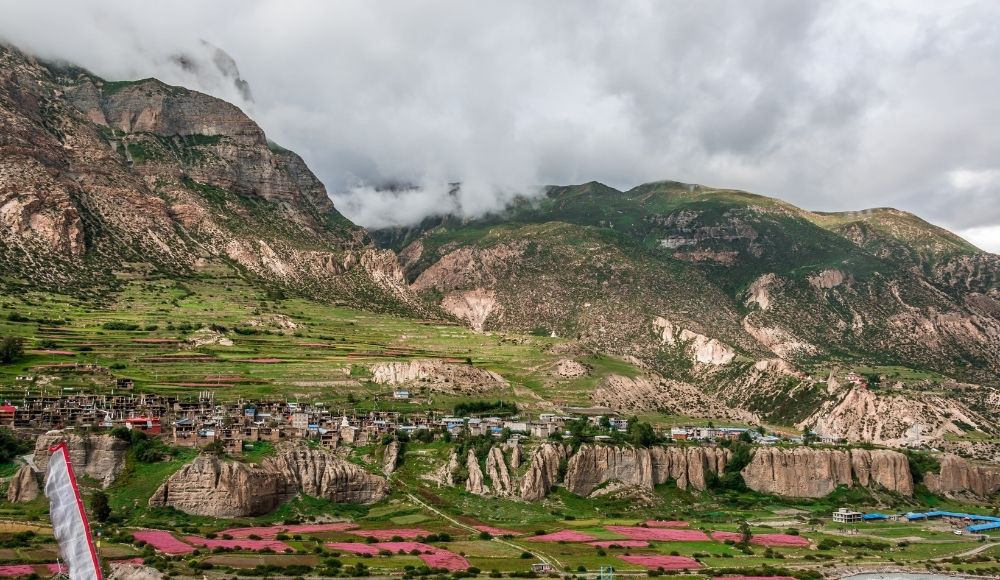
A heating system might or might not be available in all of the accommodations. Charging facilities and electricity are available along with the circuit’s accommodation. Accommodations range from guest houses, lodges, and teahouses that provide all the tourists' basic facilities. There are lodges and teahouses every hour along the main route. Moreover, one need not worry about basic lodging and fooding facilities.
Festivals play a vital role in representing a place or a particular region. Within the Annapurna Circuit, diverse people with unique ethnicities, cultures, and religions reside there. Hence, festivals play a major role in representing their culture and identity. Different beautiful festivals are celebrated by the local people and many tourists are interested to come every year to see, explore and celebrate the festivals along with the local people. Following are some of the festivals which you can explore and enjoy during the Annapurna Circuit Trek.
One of the major festivals celebrated within the Annapurna Circuit Area is the Yartung festival. It is one of the most important festivals for the people all over Mustang and is mainly celebrated in the Muktinath temple during the full moon of August every year. The Yartung festival is celebrated for 3 days by the local Thakali people with great pomp and joy and by engaging in different enjoyable activities such as dancing, singing, horse riding, etc.
Another wonderful festival is the Dhekep festival. The Dhekep ceremony is a yearly tradition that takes place in the Marpha, Syang, and Tukche hamlets of Mustang. One of the major draws of the celebration is that the monks perform with their masks. People from all around and neighbouring villages attend and enjoy the monk dance in their own traditional attire. The village head and the elders and the most prominent citizens of the village attend, participate in, and enjoy the ceremony with great enthusiasm.
It is one of the major festivals which is celebrated once in every 12 years. It is celebrated by the Thakali people of the Larjung and Kobang areas of the Annapurna Circuit. The Thakalis' glorious founding history is retold during this festival. The festival is celebrated with the aim of bringing all clan members together. (the Gauchan, Tulachan, Sherchan, and Bhattachan) of the Thak Khola's Gauchan; to listen to and commemorate the origins and rise of their ancestors. It lasts for about 18 days and is commemorated for about that long.
Toran - La is a major festival for the Thakali people of Nepal, who gather in a large congregation. It happens on the same day as Holi (Falgun Purnima) and is generally held in March. The annual festival is held three days before, after, and during the night of the full moon. Ancestors are honoured for their service to the community in this celebration. It is celebrated as Thakali New Year.
Before trekking the Annapurna Circuit, you need to obtain permits. The Annapurna Circuit Trek is completely contained within the Annapurna Conservation Area of Nepal. The trekkers must pay for an ACAP Permit to enter this area.
Along with that, the trekkers also need to pay for the TIMS (Trekkers Information Management System) card. The main objective or purpose of the TIMS card is to get rough information about the hikers and about the destinations that they are planning to visit. It helps to provide the trekkers with the necessary facilities or services during times of emergencies or natural calamities. These two are the Annapurna permits and entry fees you need to get before travelling to the Annapurna Circuit Trek.
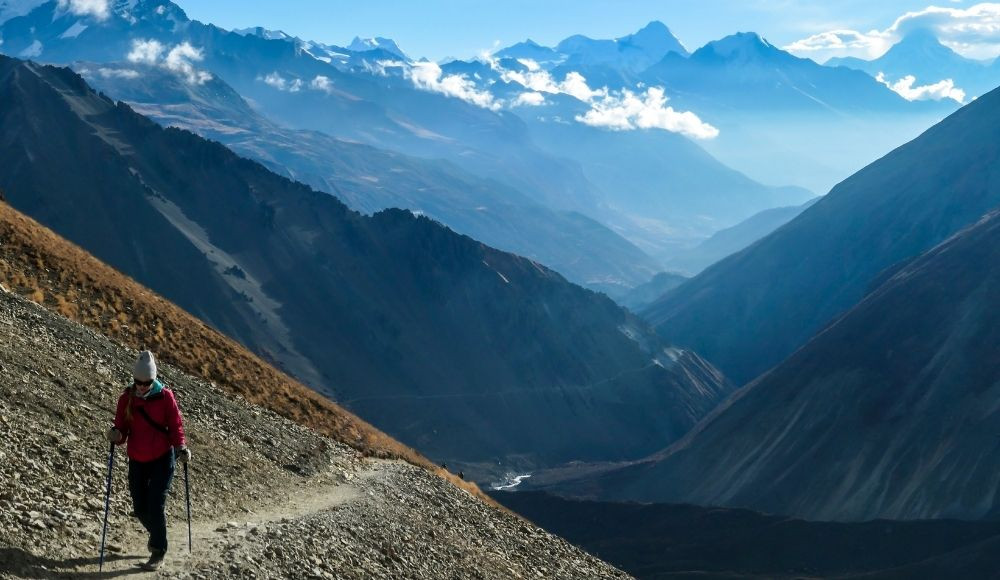
The cost of the ACAP permit for foreigners is Nrs. 3,000. Similarly, the cost of the ACAP permit for the SAARC nationals in Nrs. 1,500 and for the Indian nationalities, the cost is Nrs. 1000. Besides that, all the hikers moving towards the Annapurna circuit trek also need to get a TIMS card. Meanwhile, there are two types of TIMS cards. One is for the free individual trekkers while another one is for the organized trek. The cost of the TIMS card for individual trekkers in Nrs. 2,000 and for organized trekkers is Nrs. 1,000. Similarly, the cost of the TIMS card for the SAARC nationals is Nrs. 600 and 300 for the individual trekkers and organized trekkers respectively.
ACAP Permit
|
For Foreigners: |
NPR 3,000 |
|
For SAARC Nationals: |
NPR 1500 |
|
For Indian Nationals: |
NPR1000 |
TIMS Card
|
For Individual Trekkers: |
NPR 2,000 |
|
For Organized Trekkers |
NPR 1,000 |
|
For SAARC Nationals |
NPR 600 NPR300 |
One of the vital things to be kept in mind is to pack the essential equipment for the destination that you are travelling to. Essentials should be packed according to the different determinants such as
Which season are you travelling?
Duration of the trek?
The maximum elevation you are travelling to or planning to reach?
When packing a backpack for your trip, consider the differences in elevation, temperature, and personal items.
Trekking in the Annapurna Circuit Area is characterised by spectacular beauty and extraordinary views. The excursion lasts approximately 1-2 weeks. Except for remote and untouched regions, you will be staying mostly at a tea house, guest house, and lodges. As a result, you won't have to carry your tent, food, or cooking equipment with you everywhere you go. Basic lodging and fooding facilities are available almost everywhere around the Annapurna Circuit Area. The cost may vary or be somewhat expensive, but foods, chocolates, energy bars, light snacks, and drinks are available everywhere. So, it is not very mandatory to carry these things as it may cause excess burden or stress to you while trekking within the circuit.
We have highlighted around 10 essentials that you need to carry in your backpack while trekking around the Annapurna Circuit Area and all the details about the backpack and gear list are mentioned in the link below from where you can take full reference and make your backpack ready according to that.
Moreover, these are the essentials that you need to have when trekking throughout the Annapurna Circuit Area. For more detailed information about the trekking gear checklist, you can check Nepal Trekking Gear Checklist.
Here are some of the DOs and DON'Ts that we suggest you take into consideration and respectfully follow so that difficult circumstances might not occur and your trek throughout the Annapurna Circuit Area will be one of the most memorable experiences you have come upon:
Annapurna Circuit Trek is a moderate type of trek. Some difficulties might arise while ascending to a high altitude such as Thorong La Pass but this trek can be accomplished by walking at a regular pace and is a very suitable trek for the adventure seekers.
The best time for Annapurna Circuit Trek is Autumn (September, October, and November) and Spring (March, April, and May). Maximum tourists and trekkers visit the circuit in these respective seasons.
You can get almost all sorts of accommodations ranging from teahouses, lodges, and guesthouses according to your preferences.
Yes, you certainly can. There is the reach of electricity. Hence, it would not be difficult to charge your gadgets while trekking and staying in Annapurna Circuit Area.
Annapurna Conservation Area Permit (ACAP) and Trekkers Management Information System Card (TIMS) are needed to do Annapurna Circuit Trek.
The length of the Annapurna Circuit Trek depends upon the time within which you want to complete the trail. It depends on your pace of walking and the places you want to cover within the Annapurna Circuit Trail.
You can witness and explore the beauty of Manang, and Mustang which are both very popular and beautiful valleys of Nepal. You can go to the famous Muktinath temple and bathe at 108 stone taps and cleanse yourself. You can visit the beautiful and magnificent Tilicho lake which is the lake situated at the highest altitude in the world and the beautiful Thorong La Pass. There are many more places and things that you can explore during your time at Annapurna Circuit Area.
The daily walk required for the trek completely depends upon your pace of walking. But, the average daily walking hours for the Annapurna Circuit trek is 6-8 hours.
The most favourable would be to take your cash out from the ATM in Besisahar because even if there are 2-3 ATMs in the circuit, they might stay out of service.